Buy-to-Let : The Complete Guide
Thinking of becoming a landlord but aren’t sure where to start? Our buy-to-let starter’s kit helps you with everything there is to know about investing in bricks and mortar.
What is buy-to-let?
The UK rental market continues to go from strength to strength, with a quarter of all homes expected to be in the private rental sector by 2021. And buy-to-let is an intriguing option if you want to invest your money and see instant returns while earning passive income.
Unlike traditional investment methods, buy-to-let can offer short term returns in the form of rental income and long-term gains if the property grows in value while you own it. While there are no guarantees when you invest in bricks and mortar, buy-to-let is often seen as a safer option for your money than other investment types – hence the saying “safe as houses”.
It’s not all plain sailing, though. Landlords have been hit hard over the years with higher stamp duty and the tightening of tax relief claims. Yet, that shouldn’t put you off purchasing a buy-to-let home. As long as you understand the market and assess the risks, buy-to-let can be a solid investment.
That brings us to our comprehensive guide together, which we’ve put together detailing everything you need to know about being a first-time landlord and getting a buy-to-let mortgage. So check it out and familiarise yourself with the world of buy-to-let investing.

What is a buy-to-let mortgage?
You’ll need to get a mortgage to make up the shortfall if you’re unable to purchase the property outright as a cash buyer. The best way to achieve this is with a buy-to-let mortgage from a lender who may be a specialist in buy-to-let lending or offer it as a product alongside their residential options.
You can get a buy-to-let mortgage if:
- You want to invest in property
- Understand the risks of property investing and are well prepared to deal with them
- Already own your home with or without a mortgage (although there are some exceptions where you don’t need to own your home, which we will also cover)
- Aren’t bankrupt or have had CCJs
- Have good credit
- Earn £25,000 or more per year
- Are within the lender’s age limit
Each lender varies with their lending requirements. However, the above list provides a template of the standard criteria needed to qualify for a buy-to-let mortgage.
Who is eligible for buy-to-let mortgages?
Some of these questions include finding out how much the property could earn in rental income, what type of let you want to use the property for (long-term lets, short-term holiday lets, HMO etc) and other details about your income, homeowner situation and the deposit amount.
How buy-to-let mortgages work?
When the buy-to-let mortgage begins, you will choose a fixed period with an initial rate. This is typically between two and five years, though some last for up to 10 years. During this period you will pay an initial interest rate agreed with the lender.
Once the fixed period is up, you will move onto a higher interest rate or have the opportunity to remortgage with the same lender or someone new. However, if you decide to switch to another lender before your initial term is up, you will be required to pay a percentage of the amount borrowed, often between 0.5% and 5%.

What is the difference between Buy-to-let vs residential mortgages ?
Buy-to-let mortgages are different, as they relate to buying a property to rent it out to tenants. That means you become the landlord and rent it out to the tenant, who then becomes the occupier of the property.
Residential mortgages usually have lower interest rates, as deals are more favourable to anyone wanting to buy a home with the intention of living there. With a buy-to-let mortgage, you should expect to pay higher interest rates.
To keep the monthly payments lower on buy-to-let mortgages, most lenders offer them on an interest-only basis. This means you pay back the interest and still owe the full amount of the loan at the end of the full term.
Before getting a buy-to-let mortgage you will need to show that you can pay back the total amount of the loan after the term ends. This is usually through selling the property, which should have increased in value by the time the full mortgage term ends.
What is the criteria to get a buy to let mortgage?
Essentially, the lender you choose is based on who offers the best rate, which is linked to the Bank of England Base Rate. The base rate sets the level of interest that all other banks charge borrowers. Currently, the base rate is 0.1%, which is the lowest level in the history of the bank.
Lenders set their own rates on top of the base, and the rate you pay relates to each lender’s offering, as well as several other factors such as your deposit, expected rental income and personal finances.
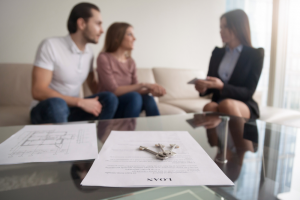
How much can you borrow?
Residential mortgages take your current earnings into account when assessing affordability. However, with a buy-to-let mortgage, the amount you earn isn’t as important as the property’s potential to generate rental income.
A lender will look at how much the property could achieve in monthly rental income and use this as a barometer for your affordability. Lenders typically demand that your rental income meets at least 125% of the loan’s monthly payments.
MORTGAGE PAYMENT | MULTIPLIER | RENTAL COVER |
£500 | £500x1.25 | £625 |
£800 | £800x1.25 | £1000 |
This percentage cover is referred to as “rental cover” and is the main way for lenders to calculate affordability. Personal finance still plays a factor, but it’s secondary to rental income.
While 125% is the official figure, rental cover requirements could differ between lenders, and in 2017, the Prudential Regulation Authority recommended that rental income should cover at least 145%. That would mean you need £725 monthly rent on a £500 mortgage.
How much deposit is required for a buy-to-let?
Paying a 25% deposit means that you can expect higher interest rates, which equates to a more expensive monthly repayment. The best deals usually start when you have a deposit of around 40%, as lenders see this as a low-risk mortgage.
Other factors worth considering are the type of property you want to buy: some lenders demand a higher deposit or won’t lend on new builds. For example, a lender who is happy to provide 75% of the cost may only lend 65% on a new building that is less than two years’ old.
Most lenders require you to own your own home, either with a mortgage or outright. However, there are some options where you can still get a buy-to-let mortgage even if you’re not a homeowner. You may be required to pay slightly higher rates and will most likely need to own another buy-to-let property that you already rent out. All of these factors will ultimately play a role in the final amount that you can borrow.
Because the criteria can vary from lender to lender, it’s always best to talk to the lender or a broker beforehand.
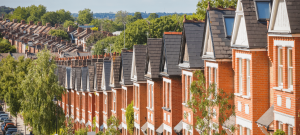
What is the true cost of a buy to let?
Fees can range from the cost of the product to a charge for arranging the mortgage. They are clearly displayed, with brokers and lenders also pointing out any costs you may incur during the mortgage application process. Some of the fees that contribute to the true cost include will be discussed below.
Booking fee
You may find that some lenders charge a booking fee to secure specific buy-to-let mortgage rates. Such a fee is commonly found on fixed-rate buy-to-let mortgage products and should usually be paid when submitting the mortgage application.
Broker fees
Using a buy-to-let mortgage broker can give you access to previously unavailable rates, which usually saves you money in the long term. You may, however, be required to pay a fee for the broker’s services if they find you a suitable and acceptable mortgage. Some brokers also charge just for their advice, although this isn’t common practice.
Lender arrangement fees
Before completion of the mortgage you may be required to pay lender arrangement fees. These are typically added to the final mortgage amount, although you can choose to pay them separately. Lender fees can be anywhere between a few hundred and a few thousand pounds.
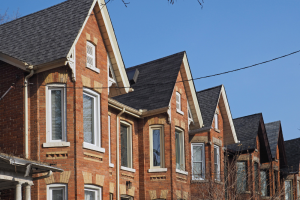
Legal fees
Expect to pay legal fees to solicitors for conveyancing when you buy a property. The average cost is around £1,000 and covers multiple checks on the property, the mortgage transfer, and exchange of contracts. Lenders who remortgage their buy-to-let are less likely to pay legal fees.
Telegraphic transfer fees
Expect to pay between £25 and £45 for telegraphic transfer fees, which are needed for the solicitor to transfer money. These fees are often payable to the solicitor.
Valuation fee
Some lenders charge a valuation fee while others do them for free. It really depends on the lender, and you can expect to pay between £300 and £900 if you’re required to pay for the valuation. The valuation will determine if the property you’re buying is worth its sale price and take place either via desktop (digital) or visit from survivor (physical)
Comparing the best BTL
Before deciding on a buy-to-let mortgage, you’ll want to ensure that you get the best deal available. The type of mortgage product you’re eligible for depends on lending criteria, but you can still get an idea about which deals are available by comparing different buy-to-let mortgages on the market.
Online comparison sites show you which products lenders offer. The details on these comparison sites aren’t always set in stone and can change frequently, so it’s worth using them only as an estimation.
You should also talk to a mortgage broker, as they will have a deep understanding of the buy-to-let market and will likely have access to deals unavailable on comparison websites. Using a broker can be really helpful for comparing buy-to-let mortgage options and assessing your eligibility.
Buy-to-let repayment calculators
It’s worth using a buy-to-let repayment calculator once you’ve compared mortgages and have an idea of how much you would like to borrow. A calculator will give you an estimation of how much you will need to pay back each month for the mortgage repayments. This can be helpful as it will give you some idea of the basic monthly cost involved with any potential mortgage.
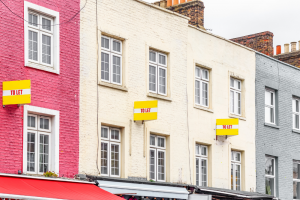
What’s the difference between fixed rate and variable rate mortgage?
Fixed rate
A fixed rate is a set amount that doesn’t change regardless of the Bank of England Base Rate. Therefore, if the base rate raises or lowers its interest, your term stays the same. For many, this offers peace of mind as they know their monthly payments won’t change while they’re on a fixed-rate mortgage.
Variable rate
Unlike a fixed rate, the variable rate follows the base rate. If it goes up, so does your monthly mortgage. However, if it goes down, your mortgage payments will also decrease. As the base rate hasn’t gone down in such a long time, variable mortgages aren’t as popular as they were previously.
Are there buy-to-let mortgage alternatives?
The primary alternative to buy-to-let mortgages involves being a cash buyer, which is only available if you have the resources to purchase the property outright without relying on borrowing any money.
In some cases, property investors may explore the option of taking out a general loan if they’re just a few thousand short of the total price. However, this isn’t a viable option if you plan on funding the majority of your buy-to-let with borrowing. Loans have high interest rates, and in most cases, you can only borrow up to £25,000.
There are also some occasions where personal circumstances can dictate the type of mortgage you need for a rental property. If this scenario arises, you may be offered different mortgage options. These include:
Consent-to-let
Some homeowners have little choice but to rent out their home, and this can happen if they need to relocate or move for reasons beyond their control. This is only an option if you already have a home with a residential mortgage, and you will need to get consent from your lender to rent out your property.
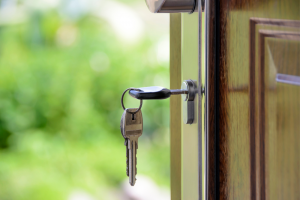
Let-to-buy
The other option involves a let-to-buy mortgage, which, again, requires you to have a property already. This type of mortgage allows you to convert your residential mortgage into a let-to-buy and use it to rent out the property while you move somewhere else and become the owner-occupier.
Limited company buy-to-let
Many landlords are choosing to get a buy-to-let mortgage as a limited company (LTD). This is also known as a SPV, which stands for special purchase vehicle and is a mortgage industry term applied when people get a buy-to-let mortgage as a company.
There may be some tax advantages if you get a buy-to-let mortgage as a SPV if you’re a higher-tax payer. However, you should always talk to an accountant before making a decision about whether to purchase a buy-to-let property as a SPV.
How long does a buy-to-let mortgage take?
The process can take longer if the lender comes back and asks for more information. If you’re using a broker, they will act as the intermediary between yourself and the lender, relaying any questions to you from the mortgage company and asking them anything on your behalf.
Once the mortgage offer has been made and accepted, your solicitor or conveyancer will handle the finer details and transfer the money from the lender to the vendor upon the compilation of your contract exchange.
What type of property should I buy?
Unlike a house purchase where you intend to live in the property, a buy-to-let investment doesn’t limit you to the area where you want to live. However, if this is your first investment, it might be worth sticking closer to home as it’ll be easier to look after the property and ensure everything is running smoothly.
However, should you wish to branch out further afield, you could always hire the services of a property manager or work with a letting agent who has an extensive network of tradespeople for when you need to arrange repairs and maintenance around the property.
Research is key to finding the best buy-to-let area for investment. You should check rental listings on property portals in different areas to see how much homes command in rent. You can also use property search websites to validate a postcode’s expected rental income.
Other factors to consider include aspects like checking average property prices for the area you’re where you’re interested in buying to see if you’re getting a good deal.
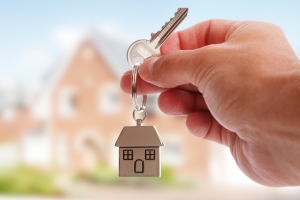
How to rent out a buy to let property
Owning a buy-to-let property means you’ll need tenants, and there are a few different ways to source them. Rightmove and Zoopla are the UK’s two largest property portals and are where most tenants begin their home search. Therefore, it’s hugely beneficial if your property features on both of these websites.
There are a couple of ways to advertise your buy-to-let on Rightmove and Zoopla, though you can’t do it without using an agent. The majority of landlords list their properties with a letting agent, with the agent then posting the homes on their own website as well as property portals like Rightmove and Zoopla.
There are two primary types of letting agent: high street and online. The high street model typically takes a percentage from the annual rental figure for their fee – this can be anywhere between seven and 10 per cent.
The online model usually charges a one-off fee, though there are entirely free options available. High street agents tend to host the viewings, while online agents let you do viewings or, in some cases, your tenant if you already have one in place who is about to move out.
Another option involves letting the property without any external help. You won’t be able to advertise on the portals, but you can still use platforms like Gumtree and social media to find new tenants.
Understanding capital growth and yields
Something else to consider is capital growth and yields. These two factors play a major role in determining your investment’s success, yet many first-time landlords are unaware of what they are and how they work.
Capital growth
Capital growth is how much your property increased in value between the purchase and sale. If you bought it for £300,000 and sold it for £500,000 10 years later, you would have seen capital growth (also known as capital appreciation) of £200,000.
For most landlords, the goal is to see the property’s value increase in the long term, especially if you funded the purchase with a buy-to-let mortgage. As most buy-to-let mortgages are interest only, landlords look to make their money back through capital appreciation.
So if your mortgage is £225k interest only and your deposit is £75k for a £300,000 purchase price, you will be able to pay the £225k back and make a profit of £200k as well as getting back your £75k deposit if you sold it for £500k.

Yields
While capital growth reflects the property’s long-term financial possibilities, yields focus on the short term. A yield is how much you earn in rental income in comparison to the purchase price. Generally speaking, a yield of 5% or higher is considered a good investment.
To calculate the yield, you need to divide the year’s total rent by the purchase price of the property and multiply it by 100.
Example: Yearly rental income of £15,000 divided by a purchase price of £300,000 multiply by 100 equals 5.
Traditionally, high yields are found in lower-priced properties, while capital growth is more attainable in more expensive homes in already-established neighbourhoods. In an ideal world, landlords will buy somewhere with high yield and capital growth potential. In order to do this, you need to identify an area with potential for growth. Looking out for things like regeneration and future transport links can identify a neighbourhood’s long term potential.
What is a void period?
On average, landlords can expect some type of void period throughout their run as a buy-to-let owner. The best way to avoid voids is by being prepared before the current tenancy ends. That means getting the property ready for advertising and taking care of any maintenance issues that arose from the previous tenancy.
Tax and stamp duty for buy to lets
Stamp duty
All home buyers need to pay stamp duty when the purchase price of a property exceeds £125,000 (£500,000 during the stamp duty holiday). If, however, you’re a buy-to-let investor, you will need to pay an extra 3% on top of the initial rate.
Below is a breakdown of the rates buy-to-let landlords need to pay when purchasing an investment property:
Stamp duty holiday rates (until June 30th 2021)
House Price | Stamp duty rate for buy-to-let/second homes |
Up to £500,000 | 3% |
£500,001 - £925,000 | 8% |
£925,001 - £1.5m | 13% |
£1.5m+ | 15% |
Normal stamp duty holiday rates
House Price | Stamp duty rate for buy-to-let/second homes |
Up to £125,000 | 3% |
£125,001 - £250,000 | 5% |
£250,001 - £925,000 | 8% |
£925,001 - £1.5m | 13% |
£1.5m+ | 15% |
Tax
As a buy-to-let landlord, you will be liable to pay tax on your rental income. If it’s your only source of earnings, you’ll need to pay tax as soon as you’ve earned £12,500 or more. However, if the rent you earn is a second income, it will be added to your primary source of revenue.
As a result, it could push your earnings over 40%, at which point you will move into a higher tax bracket. It’s possible to mitigate some of your rental property tax by offsetting costs such as agent fees, maintenance repairs, services charges and ground rent (if it’s an apartment).
Capital gains tax
You will need to pay capital gains tax on any property you sell that makes a profit. This doesn’t apply if you’re selling your main home. But if it’s a second home or rental property then you will need to pay capital gains tax. Basic taxpayers pay 18% on capital gains they make from a property, while higher-rate taxpayers pay 28%.

What mortgage tax relief is available?
However, you will be able to deduct things like letting agents fees, as well as setting up and admin costs, even if it’s for petrol used when driving to your buy-to-let property.
If your property requires you to pay service charges and ground rent, you can also reclaim these costs when you’re filing a tax return. Any insurance taken out on the property and its contents can also be claimed, as can tests on the property such as gas safety, EPC checks and electrical reports.
Maintenance fixes are also claimable, whether it’s the cost of repairing items around the rental property or the cost of replacing furniture and items you provided when the tenant moved in. However, any furniture replacements have to be like-for-lie, costing the same amount as the initial item.
It’s always best to utilise the help of a professional tax advisor before submitting your buy-to-let returns, especially if it’s your first time doing personal taxes.
Buy-to-let for landlords
A buy-to-let property can be a savvy way to invest your money, and getting the right mortgage is part of the process of finding the right investment. With this guide, you should get a better understanding of buy-to-let mortgages and what being a landlord entails.
And if you’d like to know about the mortgage offers available to you, why not speak to one of our advisors? You can book in a free, no obligation call here.